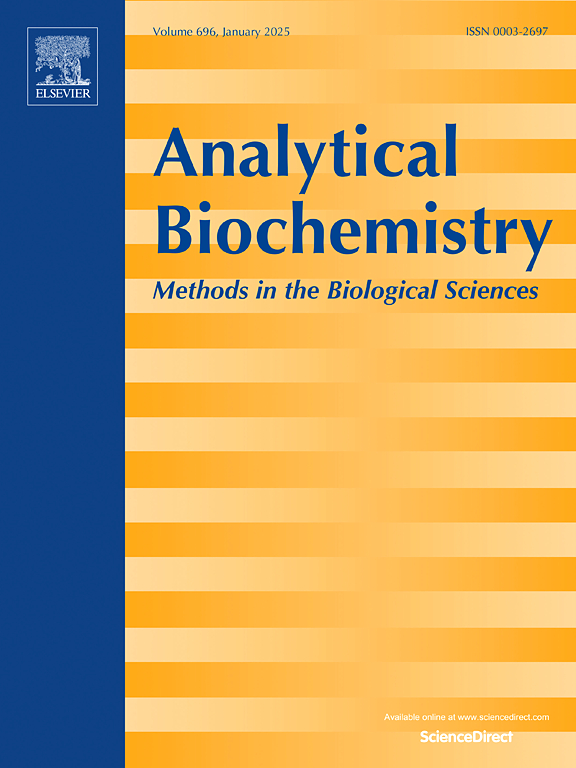Novel network construction algorithm for the study of similarity and differential mechanisms between different clinical treatments: From key metabolites to the related genes for personalized therapy of breast cancer
IF 2.5
4区 生物学
Q2 BIOCHEMICAL RESEARCH METHODS
引用次数: 0
Abstract
Breast cancer (BC) is the most common diagnosed cancer in the female population. Different near-infrared (NIR)-based technologies have been generally applied for BC clinical treatment. In this study, a novel network construction algorithm based on molecular vertical relationship (NCVR) was proposed to identify key network signals for clinical personalized treatment. In NCVR, the molecular vertical relationship that can be characterized in simple terms was proposed for network construction, thereby facilitating to better advance clinical decision making. To effectively measure the discriminative ability of molecular vertical relationship between different physiological and pathological stages, the joint probability mass function was constructed using sample frequency which can reduce the influence of sample variability caused by individual differences and the probability of over fitting caused by the high complexity of molecular expression data. NCVR was successfully employed to analyze the similarities and differences of living organisms treated by different treatment patterns (i.e., NIR and apoferritin-conjugated cypate (Cy@AFT) + NIR) on BC. The results of similarity analysis indicated that the reprogramming of cellular lipid and energy metabolism may be responsible for the BC cell death induced by treatments. Experimental results of difference analysis suggested that the disruptions in cholesterol metabolism, ferroptosis and severe lipid metabolism imbalances etc. contribute to the enhanced effectiveness of BC treatment with Cy@AFT + NIR. Then, analysis results of genes related to the selected key metabolites further provided deep insights into pathological alterations associated with BC development and illustrated why the performance of Cy@AFT + NIR therapy is better than that of NIR therapy.
新型网络构建算法研究不同临床治疗之间的相似性和差异性机制:从关键代谢物到乳腺癌个体化治疗的相关基因
乳腺癌(BC)是女性人群中最常见的癌症。不同的近红外(NIR)技术已广泛应用于BC临床治疗。本研究提出了一种基于分子垂直关系的网络构建算法(NCVR),用于识别临床个性化治疗的关键网络信号。在NCVR中,提出了可以简单表征的分子垂直关系来构建网络,从而有助于更好地推进临床决策。为了有效衡量不同生理病理阶段分子垂直关系的判别能力,采用样本频率构建联合概率质量函数,减少个体差异带来的样本变异性的影响和分子表达数据高度复杂性带来的过拟合概率。NCVR成功地分析了不同处理模式(即NIR和载铁蛋白共轭cypate (Cy@AFT) + NIR)处理的生物体在BC上的异同。相似性分析结果表明,细胞脂质和能量代谢的重编程可能是治疗引起的BC细胞死亡的原因。差异分析的实验结果表明,胆固醇代谢紊乱、铁下沉和严重的脂质代谢失衡等是Cy@AFT + NIR治疗BC有效性增强的原因。然后,选定的关键代谢物相关基因的分析结果进一步深入了解了与BC发展相关的病理改变,并说明了Cy@AFT + NIR治疗的效果优于NIR治疗的原因。
本文章由计算机程序翻译,如有差异,请以英文原文为准。
求助全文
约1分钟内获得全文
求助全文
来源期刊

Analytical biochemistry
生物-分析化学
CiteScore
5.70
自引率
0.00%
发文量
283
审稿时长
44 days
期刊介绍:
The journal''s title Analytical Biochemistry: Methods in the Biological Sciences declares its broad scope: methods for the basic biological sciences that include biochemistry, molecular genetics, cell biology, proteomics, immunology, bioinformatics and wherever the frontiers of research take the field.
The emphasis is on methods from the strictly analytical to the more preparative that would include novel approaches to protein purification as well as improvements in cell and organ culture. The actual techniques are equally inclusive ranging from aptamers to zymology.
The journal has been particularly active in:
-Analytical techniques for biological molecules-
Aptamer selection and utilization-
Biosensors-
Chromatography-
Cloning, sequencing and mutagenesis-
Electrochemical methods-
Electrophoresis-
Enzyme characterization methods-
Immunological approaches-
Mass spectrometry of proteins and nucleic acids-
Metabolomics-
Nano level techniques-
Optical spectroscopy in all its forms.
The journal is reluctant to include most drug and strictly clinical studies as there are more suitable publication platforms for these types of papers.
 求助内容:
求助内容: 应助结果提醒方式:
应助结果提醒方式:


